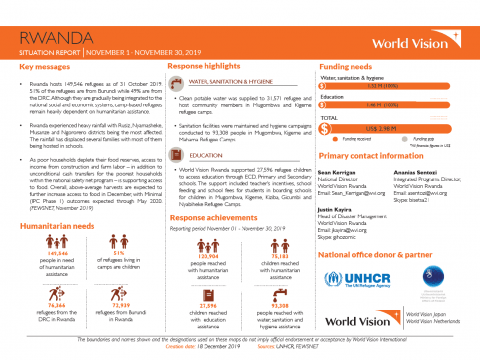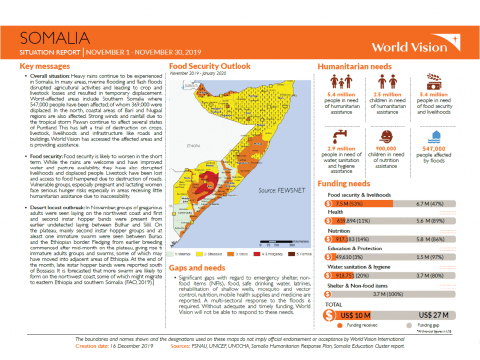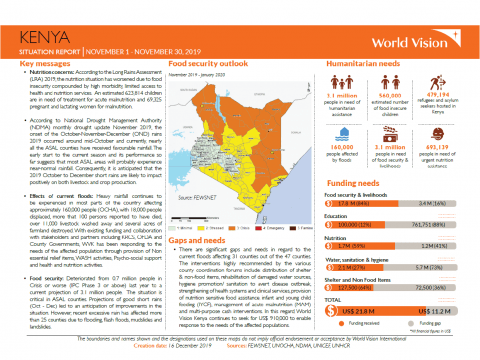Ethiopia - November 2019 Situation Report
Download
- Adverse effect of weather: Unseasonal rainfall would have a potential impact on crops that are not harvested in the country by affecting the harvesting process of matured crops. Though national meher production is expected to be average due to generally favorable June to September Kiremt rainfall, the ongoing desert locust infestation would have a negative impact on food production which additionally has a capacity to inhibit the coming belg season production if the swarm is not timely controlled.
- Desert locust infestation: According to FAO, locusts are present in an estimated 56 woredas of Afar, Amhara, Oromia, Somali, and Tigray regions. In Amhara, nearly 75,000 hectares of both crop and rangeland were infested according to the Regional Bureau of Agriculture. Some localized areas are reporting crop losses and households are harvesting immature crops to avoid largescale crop losses. Desert locusts are expected to continue hatching, specifically in Somali Region due to the favorable rainfall.
- Meher assessment: The 2019 Government-led multi-agency needs assessment was conducted from 16-30 November in all regions. Teams were deployed across regions to conduct a spot check exercise in 21 selected woredas across 12 zones, the result of which will help validate Livelihoods, Early Assessment and Protection - Livelihood Impact Analysis Sheet (LEAP-LIAS) analysis. In addition to the 21 woredas visited, it was agreed that the assessment team will come back with data for woredas affected by Non-LEAP factors such as the ongoing Desert Locust infestation and some pocket areas identified by regions.
- Disease outbreak: In November, a marked reduction of the incidence of Cholera was observed in all regions, however the transmission is active in 4 woredas of Oromia and Afar regions. A total of 103 new additional Cholera cases were reported during the period. The total Cholera cases has risen to 2,047 since the beginning of the outbreak in April 27th 2019.
Share


